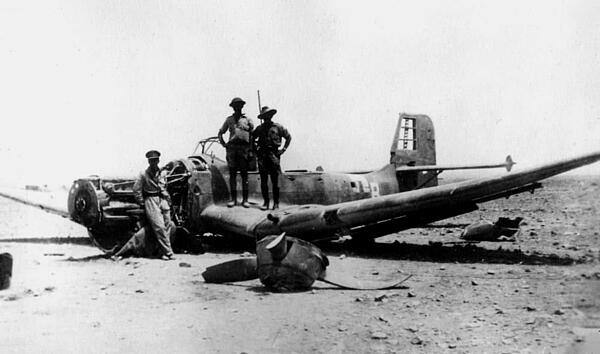Junkers 87
Junkers 87 was the name given to the German Luftwaffe's primary Stuka dive-bomber, which was a type of plane developed that was first used in military action in September 1939 during the Blitzkrieg attack on Poland.
It was the German word ‘Sturzkampfflugzeug’- or dive-bomber - that gave the plane its nickname when it was first designed in 1934. The design was considered realtively crude-looking initially, but these planes were specifically engineered to be rugged and easy to produce quickly.
The first prototype of the plane was given a Rolls-Royce Kestrel engine, but this crashes as a result of a design fault. However, the protoypes that followed were given a Junkers Jumo 201A engine instead. Once the prototypes were tested, the first recognised Stuka plane flew in 1936 and was blooded during the Spanish Civil War.
The main reason the Junkers 87 performed so well was the amount of effort that had gone into its detail focused bombing accuracy, which made it a deadly weapon against an ill-equppied army. However, its higher ranking peers such as the Spitfire and Hurricane proved to be more than a match for it during the Battle of Britain.

When the war began on 1 Septemver 1939, the Luftwaffe had produced enough Stuka to have 336 dive-bombers available. Initially, the plane proved excellent at delivering 'pinpoint bombing' of targets; if the Junkers 87 dived directly onto its target, it could nearly guarantee a hit thanks to its gull-wing design. In contrast, the straight wings of similar planes did not allow a steep angle as they would have been torn off by the force.
Despite this, it was the shape of the wings - which were its making in Poland and other parts of Western Europe - that would prove to be the plane's downfall due to the affect it had on the Stuka's speed. Records show that the plane was only capable of flying 255 mph or 410 km/h, which made it ineffective against the Spitfire or the Hurricane. Initially this wasn't an issue, as the Junkers was only targeting radar bases on Britian's coastline - a series of attacks within which it saw great success. However, when it was forced to fly further inland, its slower speed and lack of manoeuverability caused many to be successfully shot down.As a result, the German's suffered great losses and it was ultimately removed from their Western European campaign for the rest of the Battle of Britain.
Despite the plane's struggles in Britain, it was very successful when used in Operation Barbarossa, despite facing a strong opponent. Specifically, it was very effective when targeting tanks on the Eastern Front. However, by the time the Soviet Union began to advance in 1943, the plane was no longer able to stand up against their Russian counterpart - Stormaviks - or the Hurricanes that had been sent over to them in Arctic convoys. In spite of their issues, more than 5,700 Stukas were built after the war had ended.
See also: Willy Messerschmitt
MLA Citation/Reference
"Junkers 87". HistoryLearning.com. 2024. Web.
